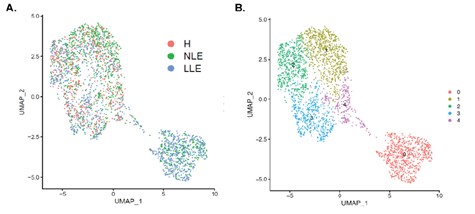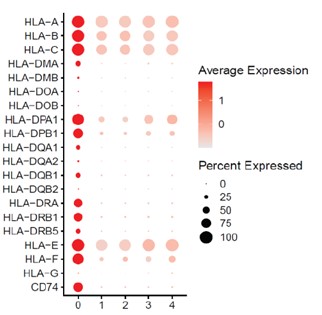Session Information
Session Type: Poster Session C
Session Time: 10:30AM-12:30PM
Background/Purpose: Cutaneous lupus erythematosus (CLE) encompasses various lesion morphologies, but photosensitivity and high type I interferon (IFN) responses are a unifying theme amongst all CLE subtypes. Chronic, elevated type I IFN exposure heightens inflammatory responses of keratinocytes (KCs) to ultraviolet radiation (UV), leading to additional type I IFN production and exacerbation of lesions. Interactions between keratinocytes and other skin cells, including melanocytes, play a crucial role in the regulation of inflammatory responses and protection against stressors.
Methods: We utilized single-cell RNA sequencing (scRNA-seq) to analyze gene expression profiles in melanocyte populations from skin samples from systemic lupus erythematosus (SLE) patients and healthy controls with and without UV treatment. Primary melanocytes were isolated from healthy control skin and stimulated with type I and type II interferons to observe their response via bulk RNA-sequencing and real-time qPCR. Flow cytometry was utilized to further characterize the crosstalk between melanocytes and keratinocytes. This was done by exposing keratinocytes to UV radiation and subsequently incubating primary melanocytes with the supernatant from these keratinocytes.
Results: We identified an unusual population of melanocytes in lesional and non-lesional SLE skin that is characterized by high type I IFN-regulated gene expression and upregulation of MHC class II (Figures 1 and 2). Bulk RNAseq data from primary melanocytes stimulated with type I and II interferons showed that treatment with either IFNα, IFNβ and or IFNγ was sufficient to increase antigen presentation genes in melanocytes (Figure 3). We thus hypothesized that KC-derived IFNs generated in response to UV light may be modulating melanocyte function. Indeed, we found that supernatants from UV-treated keratinocytes induce upregulation of antigen-presenting markers in melanocytes and this is increased when KCs are exposed to a high type I IFN environment, as is present in SLE skin. Ongoing experiments are evaluating the KC-derived factors that induce these changes in melanocytes and are examining the antigen presenting function of melanocytes.
Conclusion: Melanocytes isolated from SLE skin are abnormal and are characterized by IFN exposure and MHC Class II upregulation. Our data suggests type I IFNs induce MHC Class II upregulation in melanocytes and may be shifting melanocyte function from keratinocyte protection to immune activation. Future research aims to elucidate melanocyte-mediated antigen presentation and T cell activation in SLE.
To cite this abstract in AMA style:
Moallemian R, Zhang L, Gharaee-Kermani M, Billi A, Hurst A, Klein B, Kahlenberg J. Melanocytes Are Driven Toward an Antigen Presentation Phenotype Through UV-Induced Keratinocyte Crosstalk and Exposure to Type I Interferons in Patients with Cutaneous Lupus Erythematosus [abstract]. Arthritis Rheumatol. 2024; 76 (suppl 9). https://acrabstracts.org/abstract/melanocytes-are-driven-toward-an-antigen-presentation-phenotype-through-uv-induced-keratinocyte-crosstalk-and-exposure-to-type-i-interferons-in-patients-with-cutaneous-lupus-erythematosus/. Accessed .« Back to ACR Convergence 2024
ACR Meeting Abstracts - https://acrabstracts.org/abstract/melanocytes-are-driven-toward-an-antigen-presentation-phenotype-through-uv-induced-keratinocyte-crosstalk-and-exposure-to-type-i-interferons-in-patients-with-cutaneous-lupus-erythematosus/



